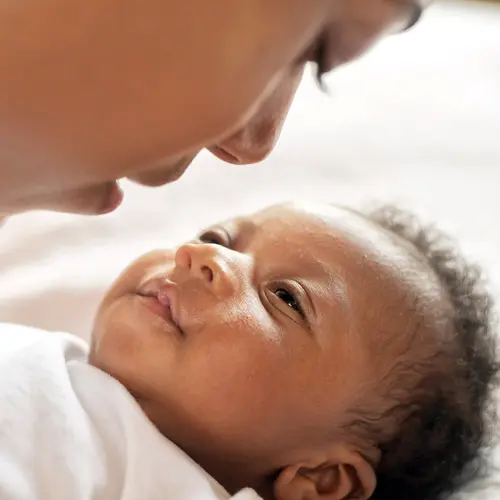Cold sores are also known as oral herpes or fever blisters. They are very common among children and adults and are usually harmless. Cold sores on infants, meanwhile, are rare but can be dangerous.
What Causes Cold Sores?
Cold sores on children, as in adults, are typically caused by the herpes simplex virus or HSV-1. This is a different strain from genital herpes (HSV-2). Both herpes strains can result in sores in any part of your body.
Most people who have the HSV-1 virus first get it between the ages of one and five. Apart from the sores, the herpes virus is usually harmless, but the sores are highly contagious. They can spread through:
- Saliva
- Skin contact
- Touching something that has the virus on it
Do Infants Get Cold Sores?
Herpes infection happens in less than 1% of births, but in most cases, newborn herpes infections are passed from mother to baby during delivery. You may not have herpes symptoms, but if you’re infected, you can still pass on the virus to your baby.
In some cases, your baby may become infected when someone who has an active infection touches, kisses, hugs, or cuddles your baby.
If the infection is limited to the mouth, skin, or eyes, your baby may recover with antiviral treatment. If left untreated, though, the herpes infection may spread to important organs. About 85% of untreated babies affected in this way may die.
What Are the Symptoms of Cold Sores?
Cold sores in kids usually start as small blisters around the mouth and lips. They may also appear on the nose, chin, and cheeks. After a few days, the blisters ooze and form a crust. They'll heal completely in one to two weeks {healthychildren.org: “Cold Sores in Children: About the Herpes Simplex Virus.”}. Besides blisters, other symptoms of cold sores in kids include:
- Drooling
- Fever
- Sore throat
- Irritability
- Swollen lymph glands
Infected newborns may have symptoms such as:
- Small, fluid-filled blisters
- Lethargy
- Poor feeding
- Seizures
What Is the Treatment for Cold Sores?
Widespread infection of the herpes virus in newborns is usually treated with the antiviral drug acyclovir. Your baby may be given this directly in their vein (intravenously) for a few weeks, then by mouth for six months.
For cold sores in children, medications help to speed up the healing time slightly. Usually, cold sores in kids go away on their own. You can help ease their discomfort, though, in a variety of ways:
- Give them cold treats like smoothies to soothe their lips and keep them hydrated.
- Don’t feed them acidic foods like tomato sauce and citrus fruits.
- Apply a warm washcloth or ice to the sores.
- If your child doesn't want to eat or drink because of mouth pain, talk to your doctor about over-the-counter medication for pain relief or antiviral cream.
Can Cold Sores Be Prevented in Babies and Young Children?
If you’re pregnant and have any blisters or sores in your genital area, tell your doctor. If you’ve never been infected and your partner has genital herpes, you may want to avoid sex during your last weeks of pregnancy.
For pregnant women with a history of herpes, your doctor may prescribe antiviral medications a month before you’re due. This helps reduce the risk of spreading the virus to your baby. If your doctor finds genital lesions, they may recommend a cesarean (C-section).
To protect your baby from viruses and bacteria, make sure that everyone washes their hands before touching or holding your newborn. Don’t allow anyone with a cold sore or who has had a cold sore in previous weeks to kiss or hold your baby. Avoid taking your baby to crowded places in their first few months of age.
For children, wash hands and clean toys regularly. If they have an outbreak, don't let them share drinks, utensils, toothpaste, and towels. Wash towels and linens in hot water.
When to See Your Doctor
Experts recommend that you take your infant or child to see their doctor if:
- Your newborn develops blisters.
- This is your child’s first cold sore, especially if they have chronic skin conditions like eczema or have had problems fighting infections.
- There are blisters near your child’s eyes. The virus can spread to the eyes, which then leads to a cornea infection ( HSV keratitis).
- Your child has cold sores, as well as a headache, seizure, fever, or confusion.
- The sores don’t heal on their own within seven to 10 days.
- The skin surrounding the cold sores feels hot to the touch or becomes swollen or red. This may indicate a secondary, bacterial infection.
- Your child has more than five or six outbreaks in a year.


